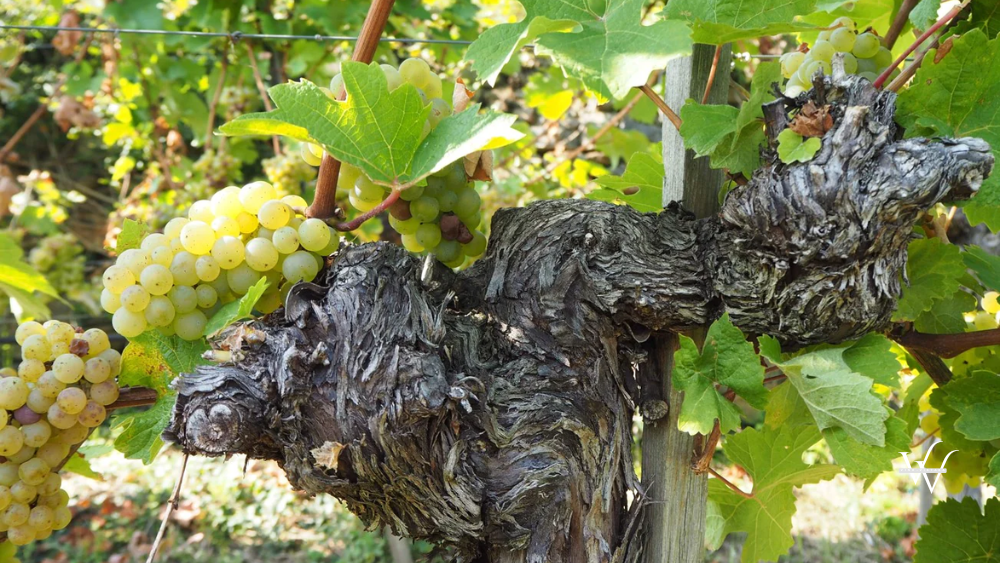The vineyards of Kremstal, Austria, are a rich tapestry of history, geology, and innovation, divided into three distinct areas: the historic city of Krems, the eastern Krems valley with its loess soils, and the picturesque wine villages south of the Danube, centered around the majestic Göttweig Abbey.
Since 2007, the Kremstal DAC designation has become synonymous with the region's signature Grüner Veltliner and Riesling wines, celebrated for their spicy, mineral-driven qualities. These wines are crafted in both a fresh, classic-to-middleweight style and as dense, complex Reserve wines, reflecting the region's diverse terroir.
A Region Steeped in History and Innovation
Krems: The Historic Heart
The city of Krems, with its western "Stein" district bordering the renowned Wachau region, is a focal point of Kremstal's viticultural heritage. The city's landscape is marked by historic granges that testify to its long-standing winemaking traditions. Today, these traditions are carried forward by a new generation of winemakers, an innovative wine cooperative, and a modern viticulture school. The soil here, composed of weathered rock, is ideal for producing the region’s acclaimed Rieslings.
The Krems Valley: A Land of Loess
To the east of Krems, the Krems Valley's thick loess terraces contribute to a unique vinous landscape. Villages like Rohrendorf and Gedersdorf, with their extensive loess soils, are known for producing rounder, fuller-bodied styles of Grüner Veltliner. These soils give the landscape a distinctive charm and imbue the wines with a special character.
Southern Villages and the Göttweig Abbey
South of the Danube, small wine villages such as Furth, Palt, Krustetten, Hollenburg, Oberfucha, and Tiefenfucha surround the towering Benedictine Göttweig Abbey, founded in 1072. This area exudes a quaint and down-to-earth character, enhanced by traditional Heurige wine taverns. The vineyards here benefit from a unique microclimate influenced by the warm air currents of the Pannonian climate zone from the east and the protective river valley against cool northern winds.
Climate and Terroir: The Essence of Kremstal Wines
Kremstal, like its neighboring regions Kamptal and Wachau, is situated in a climatic confluence that creates ideal conditions for viticulture. The interplay between the warm Pannonian air currents and the protective river valley results in a ripe, aromatic character in the wines. The region's varied geology, from crystalline rock formations to deep loess soils, provides a diverse terroir that enhances the complexity and finesse of the wines.
The Backbone of Kremstal DAC
Grüner Veltliner and Riesling are the cornerstone of the Kremstal DAC designation. These wines, whether Gebietswein (regional wine), Ortswein (village wine), or Riedenwein (single-vineyard wine), exhibit remarkable typicity and origin. Renowned vineyards like Pfaffenberg, Kögl, Wachtberg, Sandgrube, Pellingen, Gebling, Spiegel, and Steinbühel produce distinctive Riedenwein with unique character.
Beyond White Wines
While Grüner Veltliner and Riesling dominate, Kremstal also produces notable Pinot Blanc and expressive red wines, released under the "Niederösterreich" designation. These wines, though a minority, add diversity to the region’s offerings and enhance its reputation for quality and variety.
Geology: The Foundation of Kremstal's Terroir
The Kremstal region lies on the south-eastern arc of the Waldviertel and the Dunkelsteiner Wald ridge, characterized by hard crystalline rock. This geological foundation, combined with deep loess deposits in certain areas, creates a unique terroir. North of the Danube, hillsides consist of foliated and solid paragneiss, with amphibolite and granite gneiss veins, while to the north-west, Gföhl gneiss prevails. South of the Danube, granulite, a pale and hard rock related to Gföhl gneiss, is predominant.
The unconsolidated rock, primarily carbonaceous loess, overlays crystalline rocks and older sediment layers, contributing to the distinctive soil composition. Only the lowest vineyards near the Danube's flood plains lack a loess cover, instead featuring fine sediment deposits from river floods.
Food Pairings: A Culinary Delight
Kremstal DAC wines' nuanced structure makes them versatile companions for a wide range of dishes. Grüner Veltliner, especially in the Reserve category, pairs brilliantly with classic roast pork and spring rolls, showcasing its universal appeal. Kremstal Rieslings excel as partners to traditional fish dishes and innovative culinary creations, highlighting their finesse and aromatic complexity.
Wine Tourism and Gastronomy
Kremstal is not just a wine-growing region; it is a destination for wine tourism and gastronomy. The scenic vineyards, historic sites, and traditional Heurige taverns offer visitors an immersive experience in the region’s rich viticultural heritage. Whether exploring the vineyards, tasting the distinctive wines, or enjoying local culinary delights, Kremstal provides a memorable journey into the heart of Austrian winemaking.

